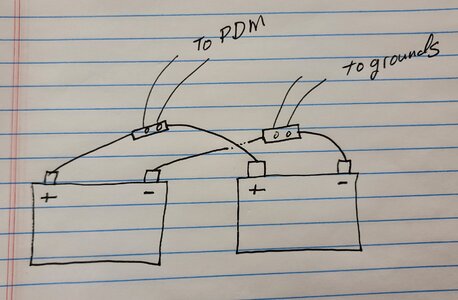Richpatty
RVF Supporter
- Joined
- Nov 2, 2019
- Messages
- 655
- Location
- Wesley Chapel, NC
- RV Year
- 2017
- RV Make
- Newmar
- RV Model
- Ventana 4310
- RV Length
- 43
- Chassis
- Freightliner
- Engine
- 400hp
- TOW/TOAD
- 2007 CR-V
- Fulltimer
- No
So as I get ready for my Lithium project, I began to think about the best way to wire them. I will have 8 100ah GC2 sized battleborns.
I know many of you use the wiring method on the left (see below). I have seen articles that say the diagram on the right pulls power from the batteries more evenly. A third method (not pictured) would be to run a positive and negative line from each battery to a busbar and then connect those busbars to the negative and positive lines on the RV. This third method would be a bit more challenging…..so based on the experience on this forum, am I good just going with the option on the right? And would this be implemented in two groups of 4?
Opinions welcome.

I know many of you use the wiring method on the left (see below). I have seen articles that say the diagram on the right pulls power from the batteries more evenly. A third method (not pictured) would be to run a positive and negative line from each battery to a busbar and then connect those busbars to the negative and positive lines on the RV. This third method would be a bit more challenging…..so based on the experience on this forum, am I good just going with the option on the right? And would this be implemented in two groups of 4?
Opinions welcome.













